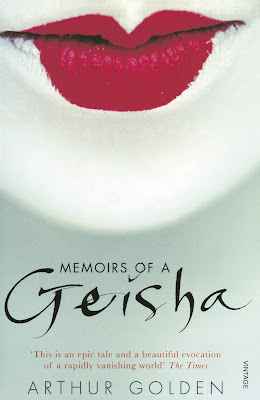Book #35
Memoirs of a Geisha by Arthur Golden
A young peasant girl is sold as servant and apprentice to a renowned geisha house. She tells her story many years later from the Waldorf Astoria in New York. Her memoirs conjure up the perfection and the ugliness of life behind rice-paper screens, where young girls learn the arts of geisha - dancing and singing, how to wind the kimono, how to walk and pour tea, and how to beguile the land's most powerful men.
I last read this book twelve years ago and had forgotten how compelling it was. There’s something delectable about having eyes into a time and place you’d otherwise be entirely unable to experience. Sayuri’s depictions and explanations of geisha culture are engaging, illuminating, and often astonishing.
Golden describes early twentieth century Kyoto in beautiful, lyrical, and illustrious detail. Every kimono, tatami mat, each pair of shoes and various meals all combine to create a picture of Sayuri’s world. This picture, and the social customs of the time, are the real draw here for me. I was fascinated by these women’s origins, what they went on to endure, and what was expected of them.
But there’s a certain cynicism which comes with growing older, particularly as a reader. This time, whilst I continued to revel in Sayuri’s story, I soon came to realise she’s a flat and fairly unlikable character. Her emotions and motivations are all geared towards one man, she pales in comparison to the likes of Hatsumomo, whose complexities are ones which would make an excellent read, but which were touched on only briefly.
However much I enjoyed ‘learning’ about geisha culture, I was acutely conscious of the potential Westernisation of the text. Surely I shouldn’t be learning these things from a white American man? Surely the real lesson, the real understanding of geisha culture, should come from a Japanese woman? Despite Golden taking instruction from geisha Mineko Iwasaki whilst writing the novel, and the backlash involved with this, I’m now compelled to dive into Mineko’s own memoir to experience the picture she paints.
So yes, a wonderful novel, and one which remains very close to my heart. With maturity, however, I feel it’s best to read this purely as a beautifully written piece of historical fiction, and to leave the real cultural teachings to those who are best placed to enlighten us.

